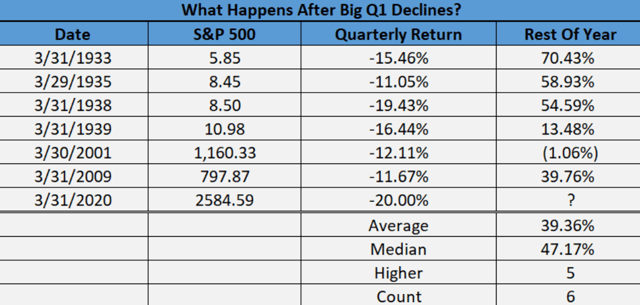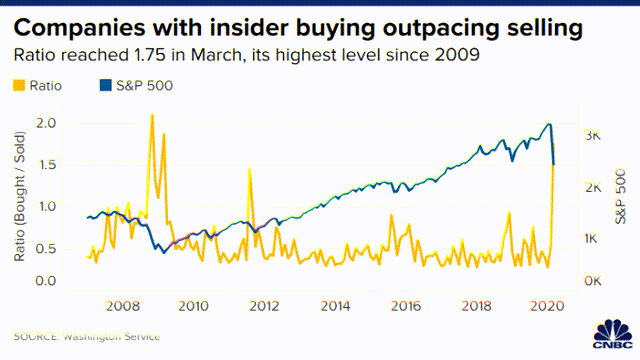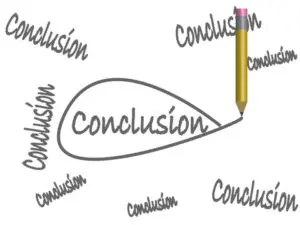(Image: Zen Buddha Silence, by Marilyn Barbone)
February 16, 2020
Journalist Bethany McLean has written an excellent book,Saudi America: The Truth About Fracking and How It’s Changing the World. (McLean is the co-author ofThe Smartest Guys in the Room: The Amazing Rise and Scandalous Fall of Enron.)
Just recently, in January 2020, U.S. crude oil production has approached 13 million barrels a day, outproducing both Saudi Arabia and Russia. The EIA (U.S. Energy Information Administration) predicts that U.S. crude oil production will average 13.2 million barrels a day in 2020 and 13.6 million barrels a day in 2021. McLean writes:
Few saw this coming. This remarkable transformation in the U.S. was brought about by American entrepreneurs who figured out how to literally force open rocks often more than a mile below the surface of the earth, to produce gas, and then oil. Those rocks–called shale, or source rock, or tight rock, and once thought to be impermeable–were opened by combining two technologies: horizontal drilling, in which the drill bit can travel well over two miles horizontally, and hydraulic fracturing, in which fluid is pumped into the earth at a high enough pressure to crack open hydrocarbon bearing rocks, while a so-called proppant, usually sand, holds the rock open a sliver of an inch so the hydrocarbons can flow.
McLean later adds:
The country’s newest hot spot, Texas’s Permian Basin, now ranks second only to Saudi Arabia’s legendary Ghawar oilfield in production per day, according to oil company ConocoPhillips. Stretching through northern Appalachia, the Marcellus shale could be the second largest natural gas field in the world, according to geologists at Penn State. Shale gas now accounts for over half of total U.S. production, according to the EIA, up from almost nothing a decade ago.
McLean again:
“It [shale] is monstrous,” says Will Fleckenstein, who drilled his first horizontal well in 1990 and is now a professor of petroleum engineering at the Colorado School of Mines. In part due to ongoing improvements in technology, he says, “It is impossible to overstate the hydrocarbons that it is technically and economically feasible to produce.”
McLean continues:
CME Group executive director and senior economist Erik Norland calls fracking “one of the top five things reshaping geopolitics.” Ever since President Franklin D. Roosevelt met the first Saudi king, Abdul-Aziz al Saud, aboard theUSS Quincyin the Suez Canal in 1945, we’ve had a devil’s bargain: our protection in exchange for their oil. The superficial analysis boils down to a simple question: If America doesn’t need Saudi oil, does America need Saudi Arabia?
Still, there are reasons to doubt the sustainability of U.S. fracking, as McLean explains:
The fracking of oil, in particular, rests on a financial foundation that is far less secure than most people realize.
The most vital ingredient in fracking isn’t chemicals, but capital, with companies relying on Wall Street’s willingness to fund them. If it weren’t for historically low interest rates, it’s not clear there would even have been a fracking boom.
“You can make an argument that the Federal Reserve is entirely responsible for the fracking boom,” one private equity titan told me. That view is echoed by Amir Azar, a fellow at Columbia University’s Center on Global Energy Policy. “The real catalyst of the shale revolution was… the 2008 financial crisis and the era of unprecedentedly low interest rates it ushered in,” he wrote in a recent report. Another investor puts it this way: “If companies were forced to live within the cash flow they produce, U.S. oil would not be a factor in the rest of the world, and would have grown at a quarter to half the rate that it has.”
Here’s the outline:
PART ONE: SHALE REVOLUTION
-
- America’s Most Reckless Billionaire
- The Brain Trust
- Debt
- Skeptics
- Bust
- It Changes the World, But It Ends in Tears
PART TWO: SAUDI AMERICA
-
- America First
- Permania
- Game of Thrones
- A New Era?
- Make America Great Again
- Losing the Race
- Epilogue
Part One: Shale Revolution
AMERICA’S MOST RECKLESS BILLIONAIRE
McLean writes about Aubrey McClendon, co-founder of Chesapeake Energy Corporation and worth over $2 billion in early 2008:
If McClendon did die broke, it wouldn’t have been out of character. During his years as an oil and gas tycoon, he fed on risk, and was as fearless as he was reckless. He built an empire that at one point produced more gas than any American company except ExxonMobil. Once, when an investor asked on a conference call, “When is enough?”, McClendon answered bluntly: “I can’t get enough.”
Many think that without McClendon’s salesmanship and his astonishing ability to woo investors, the world would be a far different place today. Stories abound about how at industry conferences, executives from oil majors like Exxon would find themselves speaking to mostly empty seats, while people literally fought for space in the room where McClendon was holding forth.
“In retrospect, it was kind of like Camelot,” says Henry Hood, Chesapeake’s former general counsel, who worked at Chesapeake initially as a consultant from 1993 until the spring of 2013. “There was a period of time that will never be duplicated with a company that will never be duplicated.”
Forbes once called McClendon “America’s Most Reckless Billionaire,” which for many in the industry defined the man, notes McLean. McLean adds:
You might think of McClendon as a bit of J.R. Ewing, the fictional character in the television seriesDallas, mixed with Michael Milken, the junk bond king who pioneered an industry and arguably changed the world, but spent several years in prison after pleading guilty to securities fraud.
McLean continues:
McClendon, who was always immensely popular, was the president and co-valedictorian of his senior class. He headed to Duke, where he was the rush chairman of his fraternity… “He was super competitive and aggressive,” recalls someone who knew him at Duke. “If he had a few drinks, he’d want to wrestle. He was big and strong and a little bit out of control.”
[…]
In college, he also met Hood, who recalls a driven if rambunctious young man. “Aubrey was thoughtful, tall, and handsome, but incredibly clumsy,” Hood recalls. “He always had an ink stain on his shirt from the pen in his front pocket. We called him ‘Aubspill,’ because he was always spilling. In basketball, he was always throwing elbows like a bull in a China shop.” Another variation of the nickname, Hood recalls, was “‘Aubkill,’ because McClendon’s outsized competitive instinct made him dangerous in physical activities.”
Initially, McClendon was going to be an accountant. But then he read an article in theWall Street Journal.
“It was about two guys who had drilled a big well in the Anadarko Basin that had blown out, and it was alleged to be the biggest blowout in the history of the country,” McClendon toldRolling Stone. “They sold their stake to Washington Gas and Light and got a $100 million check. I thought, ‘These are two dudes who just drilled a well and it happened to hit.’ So that really piqued my interest.”
McLean observes that the geologist M. King Hubbert predicted that U.S. oil production would peak in some time between 1965 and 1970. American oil production did peak at 9.6 million barrels a day in 1970. Interestingly, before then, the Texas Railroad Commission controlled the international price of oil by setting production at a certain level and maintaining spare capacity. But after U.S. production peaked, OPEC–created in 1960 by Iran, Iraq, Saudi Arabia, and Venezuela–started gaining the power to control the price of oil.
When McClendon graduated Duke in 1981, energy prices began declining. McLean writes:
But McClendon was never one to be deterred. He thought there was opportunity in assembling packages of drilling rights–for gas, not oil–either to be sold to bigger companies or to be drilled… In order to drill, you just have to persuade someone to give you a lease. McClendon became what’s known in the oil and gas business as a land man, the person who negotiates the leases that allow for drilling.
That, it turned out, would make him the perfect person for the new world of fracking, which is not so much about finding the single gusher as it is about assembling the rights to drill multiple wells. “Landmen were always the stepchild of the industry,” he later toldRolling Stone. “Geologists and engineers were the important guys–but it dawned on me pretty early that all their fancy ideas aren’t worth very much if we don’t have a lease. If you’ve got the lease and I don’t, you win.”
In 1983, McClendon partnered with another Oklahoman: Tom Ward. Six years later, they formed Chesapeake Energy with a $50,000 investment. McLean:
In some ways, they were an odd couple. Bespectacled and balding, Ward came across as more of a typical businessman, whereas McClendon, with his flowing hair and Hollywood good looks, was the dynamo of the duo. They divided the responsibilities, with McClendon happily playing the front man, raising money, and talking to the markets, while Ward stayed in the background running the business. They operated out of separate buildings, with separate staffs…
Neither Ward nor McClendon were technological pioneers. That distinction, most people agree, goes to a man named George Mitchell, who drew on research done by the government to experiment on the Barnett Shale, an area of tight rock in the Fort Worth basin of North Texas. Using a combination of horizontal drilling and hydraulic fracturing, Mitchell’s team cracked the code for getting gas out of rock that was thought to be impermeable.
At the time, however, most companies–including ExxonMobil–and most observers ignored what Mitchell was doing, believing that it would be too expensive. McLean continues:
McClendon, however, was the pioneer in the other essential part of the business: raising money. “As oxygen is to life, capital is to the oil and gas business,” says Andrew Wilmot, a Dallas-based mergers and acquisitions advisor to the oil and gas industry at Purposed Ventures. “This industry needs capital to fire on all cylinders, and the founder and father of raising capital for shale in the U.S. is Aubrey McClendon.”… “I never let Aubrey McClendon in the door for a meeting,” says an analyst who works for a big investment firm. “Because we would have bought a ton of stock and it would not have ended well. He was that good.”
In the early 1990s, Bear Stearns helped Chesapeake sell high-yield debt in a first-of-its-kind sort of deal. This was no small achievement. After all, Chesapeake didn’t have much of a track record, and there was less than zero interest in the oil and gas business from the investment community. “I watched him convince people in these meetings,” says a banker who was there. “He was so good, so sharp, with such an ability to draw people in.”
On February 12, 1993–a day McClendon would later describe as the best one of his career–he and Ward took Chesapeake public. They did so despite the fact that their accounting firm, Arthur Andersen, had issued a “going concern” warning, meaning its bean-counters worried that Chesapeake might go out of business. So McClendon and Ward simply switched accounting firms. “Tom and I were thirty-three-year-old land men at the time, and most people didn’t think we had a clue of what we were doing, and probably in hindsight they were at least partially right,” McClendon told one interviewer in 2006. Their IPO reduced their ownership stake to 60 percent, but both men kept for themselves as important perk, one that would play a key role in the Chesapeake story: They got the right to take a personal 2.5 percent stake in every well Chesapeake drilled.
McLean adds:
In the years following its IPO, Chesapeake was one of the best-performing stocks on Wall Street, climbing from $1.33 per share (split adjusted) to almost $27 per share.
There was an area called Austin Chalk where some highly successful wells had been drilled. McClendon “went all in”: Chesapeake leased more than a million acres. Unfortunately, much of this land turned out not to be productive. Chesapeake took a $200 million charge against earnings, wiping out the previous three years of profits. By 1998, Chesapeake stock was selling for $0.75. McLean:
As he would do again and again, McClendon survived by borrowing yet more money to acquire more properties. “Simply put, low prices cure low prices as consumers are motivated to consume more and producers are compelled to produce less,” he wrote in Chesapeake’s 1998 annual report. McClendon essentially made a giant bet that gas prices would rise on their own, and he billed the properties he acquired “low risk.” Luckily, he was right. Within a few years, prices were soaring again, and McClendon had gotten out of a jam, for now.
Wall Street loved Chesapeake because of the fees it paid.
From 2001 to 2012, Chesapeake sold $16.4 billion in stock and $15.5 billion of debt, and paid Wall Street more than $1.1 billion in fees, according to Thomson Reuters Deals Intelligence. McClendon was like no other client.
McClendon developed a reputation of overpaying. There were stories of him offering ten times the amount of other offers. But he was extremely hard-working, and would frequently send an email at 4:00 a.m.
McLean writes:
But with the sort of price increase that the market was experiencing at the time, it didn’t seem to matter what McClendon had paid. Gas prices steadily marched upward, and by their peak in June 2008, they had more than doubled in just a few years. Chesapeake’s stock moved in lockstep, recovering its losses from the 1990s, and more. It hit over $65 a share in the summer of 2008, giving the company a market value of more than $35 billion. That made McClendon’s shares worth some $2 billion.
McLean again:
To Wall Street investors, McClendon was delivering on what they wanted most: consistency and growth. His pitch was that fracking had transformed the production of gas from a hit or miss proposition to one that operated with an on and off switch. It was manufacturing, not wildcatting. He became a flag waver for natural gas…
For a man steeped in the industry’s history of booms and busts, McClendon had by now convinced himself that gas prices would never fall. In August 2008, he predicted that gas would stay in the $8 to $9 range for the foreseeable future.
In the spring and summer of 2008, Chesapeake raised $2.5 billion by selling stock, and $2 billion selling debt. Moreover, with Chesapeake stock near an all-time high, McClendon continued to buy shares on margin. Someone who knew him said McClendon always had to be “all in” because it was “so important to him to win.”
McLean notes that McClendon forgot that just as low prices cure low prices, so high prices cure high prices.
THE BRAIN TRUST
McLean writes about EOG Resources, which others called “the Brain Trust.” EOG was a natural gas company. But the CEO Mark Papa realized that natural gas prices would be low for decades. Papa had EOG change its focus to oil production.
First, EOG began drilling for oil in the Bakken, a formation of about 200,000 square miles below parts of Montana, North Dakota, and Saskatchewan. Then EOG began drilling for oil in the Eagle Ford shale under Texas. McLean:
In the spring of 2010, EOG announced to a crowd of Wall Street investors at the Houston Four Seasons that the Eagle Ford contained over nine hundred million barrels of oil, enough to rival the Bakken.
McLean reports that money was pouring into the American energy business, which was a rare area of growth after the Great Recession. Oil prices kept increasing, and no one thought they would fall again. Soon the boom changed the U.S. economy.
DEBT
McLean writes:
As gas prices began to fall in 2008, so did Chesapeake’s stock, from its peak of $70 in the summer of 2008 to $16 by October. With that steep slide, the value of the shares he’d pledged to banks in exchange for loans also fell–and the banks called his margin loans. Rowland, whose office was about fifty feet away from McClendon’s, recalls him walking in and saying, “Marc, they’re selling me out.” “It was a one minute conversation,” says Rowland. “He went from a $2 billion net worth to a negative $500 million. There wasn’t any sweat in his eye or anything like that. It was just the way he was.”
Indeed, from October 8 to October 10, McClendon had to sell 94 percent of his Chesapeake stock. “I would not have wished the past month on my worst enemy,” he said in a meeting.
The Chesapeake board of directors, which was one of the highest paid in the industry, gave McClendon a $75 million bonus. This brought McClendon’s total pay for the year to $112 million, which made him the highest paid CEO in corporate America that year. McLean:
Underlying all of McClendon’s enterprises was a vast and tangled web of debt. That 2.5 percent stake in the profits from Chesapeake’s wells that McClendon and Ward had kept for themselves at the IPO had come with a hitch: McClendon had to pay his share of the costs to drill the wells. Over time, according to a series of investigative pieces done by Reuters, he quietly borrowed over $1.5 billion from various banks and private equity firms, using the well interests as collateral. Reuters, which entitled one piece “The Lavish and Leveraged Life of Aubrey McClendon,” also reported that much of what McClendon owned, from his stake in the Oklahoma City Thunder to his wine collection to his venture capital and hedge fund investments, was also mortgaged.
As for Chesapeake, the company continued to bleed cash. McLean:
From 2002 to the end of 2012, there was never a year in which Chesapeake reported positive free cash flow (meaning the cash it generated from operations less its capital expenditures). Over the decade ending in 2012, Chesapeake burned through almost $30 billion.
McLean says that Chesapeake loaded up on debt and sold stock to investors in order to cover its costs. The company also sold some of its land. Chesapeake was going to need higher natural gas prices in order to survive.
In January 2013, Chesapeake announced that McClendon would retire. Right after leaving, McClendon started American Energy Partners, an umbrella company for a smorgasbord of new companies. Within only a few years, McClendon had raised $15 billion in capital and his companies employed eight hundred people. Meanwhile, the price of gas rose, hitting $6.
SKEPTICS
Short-sellers weren’t just skeptical of McClendon. They were skeptical of the entire industry, which seemed to consume more capital than it produced. The famous short-seller David Einhorn made a detailed case for shorting the shale industry at the 2015 Ira W. Sohn Investment Research Conference. McLean:
Einhorn found that from 2006 to 2014, the fracking firms had spent $80 billion more than they had received from selling oil and gas. Even when oil was at $100 a barrel, none of them generated excess cash flow–in fact, in 2014, when oil was at $100 for part of the year, the group burned through $20 billion.
McLean continues:
A key reason for the terrible financial results is that fracked oil wells in particular show an incredibly steep decline rate. According to an analysis by the Kansas City Federal Reserve, the average well in the Bakken declines 69 percent in its first year and more than 85 percent in its first three years, while a conventional well might decline by 10 percent a year. One energy analyst calculated that to maintain production of 1 million barrels per day, shale requires up to 2,500 wells, while production in Iraq can do it with fewer than 100. For a fracking operation to show growth requires huge investment each year to offset the decline from the previous years’ wells. To Einhorn, this was clearly a vicious circle.
Furthermore, the shale revolution wouldn’t have been possible were it not for the ultra-low interest rate policy by the Federal Reserve. McLean:
Amir Azar, a fellow at Columbia’s Center on Global Energy Policy, wrote than by 2014, the industry’s net debt exceeded $175 billion, a 250 percent increase from its 2005 level. But interest expense increased at less than half the rate debt did, because interest rates kept falling.
BUST
In late November, 2014, at a meeting in Vienna, Saudi Arabia–led by its oil minister Ali Al-Naimi–and OPEC decided to leave production where it was rather than cut it. The marginal cost to produce a barrel of oil in Saudi Arabia is “at most” $10, according to Al-Naimi, whereas it was as much as five times that figure for U.S. frackers to produce a barrel of oil. Many people interpreted OPEC’s decision not to cut as an attempt to drive U.S. frackers out of business by causing the oil price to collapse.
By February 2016, a barrel of oil sold for just $26. Soon came the reckoning:
One after another, debt-laden companies began to declare bankruptcy, with some two hundred of them eventually going bust.
Acquisitions had not worked out well:
As one investor put it: “All of the acquisitions of shale assets done by the majors and by international companies have been disasters. The wildcatters made a lot of money, but the companies haven’t.”
IT CHANGES THE WORLD, BUT IT ENDS IN TEARS
McLean:
Even in those dark days, McClendon remained a true believer. Rather than back down he doubled down. He announced deal after deal… Even those who were skeptical of him were amazed. “Look at this guy who mortgaged it all to start a new company in the teeth of a terrible decline,” says one financier. “If he went out, he was going to go out in a blaze of glory.”
McLean continues:
Those who know McClendon and who backed him believe he might have survived the financial hell, maybe even raised the capital for a third go round. But he could not escape the legal hell he also found himself in.
…In the spring of 2014, a year after McClendon had left Chesapeake, the state of Michigan brought criminal charges against the firm for conspiring with other companies to rig the bids in a 2010 state auction for oil and gas rights… McClendon and the CEO of a Canadian company named Encana had divvied up the state, agreeing not to bid on leases in each other’s allocated counties, according to the charges. “Should we throw in 50/50 together here rather than trying to bash each other’s brains out on lease buying?” McClendon once asked an Encana executive, according to evidence filed in the case.
A raft of civil lawsuits were filed alleging that Chesapeake had used a similar strategy in other hot plays.
Part Two: Saudi America
AMERICA FIRST
McLean writes:
Citigroup chief economist Ed Morse said that the U.S. had the potential to become the “new Middle East,” and Leonardo Maugeri, a former director at Italian energy firm Eni who became a fellow at the Harvard Kennedy School’s Belfer Center for Science and International Affairs, coined the phrase “Saudi America” when his 2012 report predicted that the U.S. could one day rival Saudi Arabia’s fabled oil production.
McLean adds:
During the Obama Administration, U.S. and European politicians began pushing for America to accelerate the granting of permits for new LNG facilities so that the U.S. could export natural gas to Europe, weakening Russia’s ability to use its energy supplies as a political weapon… Ambassadors from Hungary, Poland, Slovakia, and the Czech Republic sent a letter asking Congress to allow the faster sale of more natural gas to Europe.
McLean describes how the U.S. ban on oil exports was eventually repealed.
Studies came out from various industry-friendly organizations arguing that free trade in oil would create nearly a million jobs, add billions to the economy, and would lower the trade deficit.
[….]
…Repeal of the export ban was ultimately tucked into the sprawling $1.1 trillion year-end 2015 spending bill.
PERMANIA
McLean:
While on the campaign trail, then-candidate Donald Trump began to talk about energy independence. Upon election, he installed one of the most energy heavy cabinets in modern history, from ExxonMobil CEO Rex Tillerson as Secretary of State; to former Oklahoma Attorney General Scott Pruitt as head of the Environmental Protection Agency, which he had sued more than a dozen times to protect the interests of energy companies; to former oil and gas consultant Ryan Zinke as Secretary of the Interior.
Einhorn and other skeptics of fracking ended up being wrong. McLean writes:
As it turns out, the demise of fracking that seemed so inevitable wasn’t inevitable after all. There are a few reasons why that was the case, but it all begins with the Permian–Permania, some are now calling it.
Fly into Midland, and all you see across the flat dry land are windmills and drilling rigs. “Outside of Saudi Arabia, the whole oil story today is West Texas,” one investor tells me.
McLean explains:
What set the Permian apart from other plays is geological luck. Its oil- and gas-bearing rocks are laid down in horizontal bands… That means that one lease can give you multiple layers of hydrocarbons, and also that you can drill more efficiently, because you only have to use one expensive rig to access multiple layers.
Furthermore, unlike the Bakken and the Marcellus, the Permian already had infrastructure in place including pipelines.
In 2010, the Permian was producing nearly a million barrels a day. In 2017, it was producing 2.5 million barrels a day. Today (February 2020), the Permian is producing over 4.8 million barrels a day, making it the largest oil field in the world. See: https://www.eia.gov/petroleum/drilling/#tabs-summary-2
As for overall oil production, the EIA predicts that the U.S. will produce 13.2 million barrels a day in 2020 and 13.6 million barrels a day in 2021. See: https://www.eia.gov/outlooks/steo/report/us_oil.php
This makes the U.S. the world’s biggest energy power, since Saudi Arabia produces a maximum of 11 million barrels a day and is currently producing just under 10 million barrels a day in order to move oil prices higher. Russia produces just under 11 million barrels a day.
McLean writes:
Until recently, the history of shale drilling was that operators would watch what others did, and if someone’s new technique got more oil and gas out of the ground, then everyone else would start doing that.
But now drillers are more data-driven, looking for repeatable ways to get oil out of the ground at the lowest cost. Horizontal wells used to be about a mile long, but now one company’s well extended almost four miles. Moreover, while the average fracked well used 4 million pounds of sand in 2011, now the average fracked well uses 12 million pounds of sand.
McLean adds:
At the same time, other things are getting more minute and efficient. Drillers are also executing smaller, more complex, and more frequent fractures. These more precise fracks reduce the risk that the wells “communicate”–that one leaks into another, rendering them inoperable–so the wells can be drilled more closely together…
According to a 2016 paper by researchers at the Federal Reserve, not only are rigs drilling more wells, but each well is producing far more. The extraction from the new wells in their first month of production has roughly tripled since 2008. Break-even cost–the estimate of what it costs to get a barrel of oil out of the ground–has plunged. Before the bust, it was supposedly around $70; analysts say it’s less than $50 now…
McLean:
The dramatic rebound make skeptics look spectacularly wrong–no one more so than David Einhorn.
Then McLean makes an important point:
And yet, even today, it is unclear if we will look back and see fracking as the beginning of a huge and lasting shift–or if we will look back wistfully, realizing that what we thought was transformative was merely a moment in time. Because in its current financial form, the industry is still unsustainable, still haunted by McClendon’s twin ghosts of heavy debt and lack of cash flow. “The industry has burned up cash whether the oil price was at $100, as in 2014, or at about $50, as it was during the past three months,” one analyst calculated in mid-2017. According to his analysis, the biggest sixty firms in aggregate had used up an average of $9 billion per quarter from mid-2012 to mid-2017.
The availability of capital, made possible by low interest rates, has been central to the success of the shale industry, notes McLean:
Wall Street’s willingness to fund money-losing shale operators is, in turn, a reflection of ultra-low interest rates. That poses a twofold risk to shale companies. In his paper for Columbia’s Center on Global Energy Policy, Amir Azar noted that if interest rates rose, it would wipe out a significant portion of the improvement in break-even costs.
But low interest rates haven’t just meant lower borrowing costs for debt-laden companies. The lack of return elsewhere also led pension funds, which need to be able to pay retirees, to invest massive amounts of money with hedge funds that invest in high yield debt, like that of energy firms, and with private equity firms–which, in turn, shoveled money into shale companies, because in a world devoid of growth, shale at least was growing. Which explains why Lambert, the portfolio manager of Nassau Re, says “Pension funds were the enablers of the U.S. energy revolution.”
McLean points out that private equity firms raised over $100 billion–almost five times the usual amount–in 2016 to invest in natural resources. Many private equity investors have done well because other investors have been willing to invest in energy companies based upon acreage owned rather than based upon a multiple of profits. McLean:
“I view it as a greater fool business model,” one private equity executive tells me. “But it’s one that has worked for a long time.”
Some believe that the U.S. is squandering its shale reserves by focusing on growth-at-all-costs. McLean:
“Our view is that there’s only five years of drilling inventory left in the core,” one prominent investor tells me. “If I’m OPEC, I would be laughing at shale. In five years, who cares? It’s a crazy system, where we’re taking what is a huge gift and what should be real for many years, not five years, and wasting it…”
That said, McLean notes that some longtime skeptics believe the industry is moving in the right direction by focusing on generating positive free cash flow.
GAME OF THRONES
McLean writes:
OPEC wasn’t as impervious to lower prices as Ali Al-Naimi, the Bedouin shepherd-turned-oil-minister, seemed to have suggested in the fall of 2014. True, Saudi Arabia and other OPEC members spend a lot less money to get a barrel of oil out of the ground than do U.S. frackers. But it turns out that Al-Naimi’s measurement was flawed. That’s because the wealthy (and not-so-wealthy) oil-rich states have long relied on their countries’ natural resources to support patronage systems, in which revenue from selling natural resources underwrites generous social programs, subsidies, and infrastructure spending. That, in turn, has helped subdue potential political upheavals…
This is an expensive way to run a country, and so the patronage system gave rise to the notion of the fiscal break-even price, which essentially is the average oil price that an oil state needs to balance its budget each year. And it really does all come down to oil: McKinsey noted in a December 2015 analysis that Saudi Arabia gets about 90 percent of its government revenue from oil.
McLean adds:
At the same time, a Game of Thrones was starting in Saudi Arabia. In late 2014, King Abdullah bin Abdulaziz Al Saud, who had led Saudia Arabia for a decade, passed away, leading to the elevation of his brother, King Salman bin Abdulaziz, to the throne. With that came the accession of the new king’s son, Mohammed bin Salman. The new deputy crown prince, who has been nicknamed MBS, was then just thirty years old. His father gave him unprecedented control over a huge portion of the economy, including oil.
McLean continues:
Transforming the system is exactly what Saudi Arabia is trying to do. MBS is viewed as the architect of a breathtakingly audacious plan called Saudi Vision 2030.
Part of the plan is to increase the number of Saudis in private employment. The funding for the plan is going to come from the recent IPO of Saudi Aramco. The IPO valued the company at about $1.7 trillion, making Saudi Aramco the largest public company in the world. However, the IPO only raised about $25.6 billion, roughly a third of what MBS hoped for. That’s because the company is only listed on the Tadawul, Saudi’s stock exchange, instead of being listed in New York or London, as originally planned. Due in part to weak oil prices, there wasn’t sufficient interest in Saudi Aramco’s IPO from global investors. See: https://www.nytimes.com/2019/12/06/business/energy-environment/saudi-aramco-ipo.html
A NEW ERA?
McLean writes about the U.S. lowering oil imports significantly:
Limiting America’s dependence on unstable regions of the world may seem like an unalloyed positive, but the larger effects are quite murky. “It’s a very, very difficult question as to whether it makes for a safer world or a less safe world,” says Norland… He worries that economic hardship can lead to increased terrorism and even civil war–a horror anywhere, but one that is especially horrible in countries like Angola, where a civil war than began in 1975 just ended.
McLean continues:
The shale revolution also figures into America’s often vexing relationship with China, the world’s second-largest economy. China has overtaken the U.S. as the world’s biggest oil importer, but what’s even more astounding is that shipments of U.S. crude oil to China, which were nothing before the lifting of the export ban, hit almost $10 billion in 2017. China is also on track to become the biggest importer of U.S. LNG… This could help reduce our trade deficit, and could be a healthy change from a world where the U.S. and China compete for scarce energy supplies.
Meanwhile, Saudi Arabia is worried that the oil for security bargain between Saudi Arabia and the U.S. is breaking down, as U.S. oil imports from Saudi Arabia continue to decline. However, notes McLean:
There are a lot of reasons it’s in America’s interest to have a stable Middle East, whether it’s fighting terrorism, resisting the spread of nuclear weapons, protecting Israel–or keeping the global economy functioning. Even if America doesn’t need Middle Eastern oil, its allies in Europe do, and China certainly does. This isn’t just altruism. In a world where over 40 percent of the S&P 500’s revenues come from outside the U.S., the American economy is dependent on the global economy.
MAKE AMERICA GREAT AGAIN
McLean says:
What is obvious, even today, is the enormous impact of shale gas on the domestic economy. “The U.S. has the lowest cost energy prices of any OECD nation,” noted the Energy Center’s Stephen Arbogast. Prices are hovering at less than half of prices in much of the rest of the world. That means the energy intensive manufacturing in the U.S. “enjoys a significant advantage versus Europe, Japan, or China, all of whom depend upon imported oil and LNG for marginal supplies.”
McLean adds:
Since 2010, over three hundred chemical industry projects worth $181 billion have been announced in the U.S., according to the American Chemistry Council, a trade group representing chemical companies.
Furthermore, cheap natural gas is gradually replacing coal:
Cheap natural gas is what’s destroying coal, not tree-hugging liberals. It’s now cheaper to build a power plant that uses natural gas than to build one fueled by coal. As a result, the market share for coal in power generation has fallen from 50 percent in 2005 to around 30 percent today.
McLean points out that the replacement of coal by natural gas is probably positive for the environment. In 2017, U.S. carbon dioxide emissions hit a twenty-five years low. However, there has been a huge rise in emissions of methane due to the natural gas supply chain. Some scientists believe that methane is a more potent greenhouse gas than carbon dioxide.
Meanwhile, instead of trying to improve the natural gas supply chain, the Trump Administration has been busy trying to bail out the coal industry. McLean:
In the fall of 2017, the Department of Energy, under Rick Perry, announced a plan that would in effect force regional electricity grids to purchase large amounts of coal. The ostensible reason is to ensure a supply of fuel that can be stored and called upon in the event of a disruption–but in addition to distorting markets and likely causing an increase in energy prices, the plan ran counter to the Department’s own study, which reported that increased reliance on natural gas and renewables was not reducing the reliability of the grid.
That said, the Trump Administration is taking other actions that would increase the supply of natural gas:
Trump’s initial proposal was to unlock our “$50 trillion in untapped shale, oil, and natural gas reserves,” and to further that goal, he signed an executive order to ease regulations on offshore drilling and eventually allow more to occur, particularly in the Arctic Ocean. His administration has also proposed allowing drilling in the Arctic National Wildlife Refuge for the first time in forty years. The effect of all this would be to make it harder to control methane leaks, and it would also likely crater prices, thereby making the economics of drilling even less attractive than they already are. If this comes about at a time of rising interest rates and the end of the era of cheap capital, we may soon begin talking about how the Trump Administration killed the shale revolution.
LOSING THE RACE
No one can predict how long it will take for the world to transition to a place where we no longer use oil and gas. McLean writes:
Most scholars think the transition will take decades. But there are those who say it might come much more quickly. Most prominently, in a 2015 study, Stanford University engineering professor Mark Jacobson and colleagues have argued that it was technically feasible for all fifty states to run on clean renewable energy by 2050, with an 80 percent conversion possible by 2030. Of course, there’s also the opposite argument. Fatih Birol, the executive director of the International Energy Agency, a Paris-based nongovernmental organization, doesn’t think we’ll see peak demand for oil any time soon, mainly because very few countries have any sort of fuel economy standards for trucks, and the use of renewables in freight transportation lags passenger vehicles enormously. And while passenger cars make up about 25 percent of oil demand, other modes of transportation, like shipping, aviation, and freight account for almost 30 percent… OPEC, too, projects that demand will keep increasing through 2040.
McLean says that not knowing the precise timing doesn’t mean the U.S. government, led by Trump, should pretend that the transition isn’t coming.
President Trump has proposed slashing the budget for a division of the Department of Energy called the Office of Energy Efficiency and Renewable Energy… The proposed spending cuts caused the last seven heads of the office, including three who served under Republican presidents, to write a letter to Congress. “We are unified that cuts of this magnitude… will do serious harm to this office’s critical work and America’s energy future,” they wrote. Trump has also imposed tariffs on foreign-made solar panels, which could decrease installation volumes in coming years; Bloomberg called the tariffs “the biggest blow to renewables yet.”
Meanwhile, China and other countries, even including Saudi Arabia, are far ahead of the U.S. when it comes to the transition to clean energy.
EPILOGUE
McLean writes:
I found that it’s a fool’s errand to make bold predictions about what’s to come, but the most honest answer I found about the future came from research firm IHS Markit.
The firm has three scenarios. The first, called Rivalry, is the base case. Rivalry, IHS says, means “intense competition among energy sources plus evolutionary social and technology change. Gas loosens oil’s grip on transport demand. Renewables become increasingly competitive with gas, coal, and nuclear in power generation.”
The second scenario, called Autonomy, is a much faster-than-expected transition away from fossil fuels. “Revolutionary changes in market, technology, and social forces decentralize the global energy supply and demand system.”
The last scenario is called Vertigo. Vertigo means “economic and geopolitical uncertainty drive volatility and boom-bust cycles with economic concerns slowing the transition to a less carbon-intensive economy.”
McLean adds:
The potential for vertigo helps explain why Charlie Munger, the famous investor and thinker and longtime Warren Buffett sidekick, believes that we should conserve what we have, instead of drilling frenetically. Munger argues that for all the eventual certainty of renewables, there is still no substitute for hydrocarbons in several essential aspects of modern life, namely transportation and agriculture.
Part of why the U.S. can feed its population is because yield per acre has increased dramatically in the modern era–but that’s in large part due to pesticides, nitrogenous fertilizers and other agricultural products that are made through use of hydrocarbons.
McLean continues:
As history shows, even oil and gas executives don’t have a clue what’s going to happen next. Charlie Munger might be right. Or shale oil and gas might do what shale oil and gas have done since the revolution began, and surprise to the upside. EOG might discover ways to get oil economically out of other places we never thought we could get oil economically. Or there could be a battery breakthrough tomorrow that renders oil obsolete more quickly than anyone ever dreamed.
McLean observes that we should recognize that America’s oil and gas resources are very different. America’s natural gas is ultra-low cost and will last at least a century. As for oil, it’s not clear what the ultimate supply is, nor is it clear at what price oil is recoverable.
Furthermore, notes McLean, we should keep in mind the extent to which both oil and (to a lesser extent) gas drillers have been dependent upon low-cost capital, which may be less available when interest rates eventually rise. McLean:
For the first time in perhaps forever, at least some long-term investors are aligned with conservationists, and they are trying to send a message that isn’t drill, baby, drill–but rather drill thoughtfully and profitably, so that more people benefit from America’s resources for longer, and it isn’t only executives getting a payday.
McLean adds:
In a recent letter to the firm’s clients, JP Morgan chief strategist Michael Cembalest wrote that one thing he considered critical for our future was “the ability to develop natural gas-powered vehicles and trains with lower fuel costs than gasoline- or diesel-powered counterparts, and with greater geopolitical fuel security.”
…The energy grid of the future will likely consist of mostly renewables but with the ability to rapidly add backup power from natural gas when wind, solar, and hydropower generation is low.
BOOLE MICROCAP FUND
An equal weighted group of micro caps generally far outperforms an equal weighted (or cap-weighted) group of larger stocks over time. See the historical chart here: https://boolefund.com/best-performers-microcap-stocks/
This outperformance increases significantly by focusing on cheap micro caps. Performance can be further boosted by isolating cheap microcap companies that show improving fundamentals. We rank microcap stocks based on these and similar criteria.
There are roughly 10-20 positions in the portfolio. The size of each position is determined by its rank. Typically the largest position is 15-20% (at cost), while the average position is 8-10% (at cost). Positions are held for 3 to 5 years unless a stock approachesintrinsic value sooner or an error has been discovered.
The mission of the Boole Fund is to outperform the S&P 500 Index by at least 5% per year (net of fees) over 5-year periods. We also aim to outpace the Russell Microcap Index by at least 2% per year (net). The Boole Fund has low fees.
If you are interested in finding out more, please e-mail me or leave a comment.
My e-mail: jb@boolefund.com
Disclosures: Past performance is not a guarantee or a reliable indicator of future results. All investments contain risk and may lose value. This material is distributed for informational purposes only. Forecasts, estimates, and certain information contained herein should not be considered as investment advice or a recommendation of any particular security, strategy or investment product. Information contained herein has been obtained from sources believed to be reliable, but not guaranteed.No part of this article may be reproduced in any form, or referred to in any other publication, without express written permission of Boole Capital, LLC.















